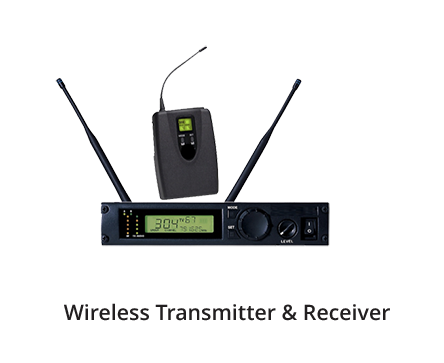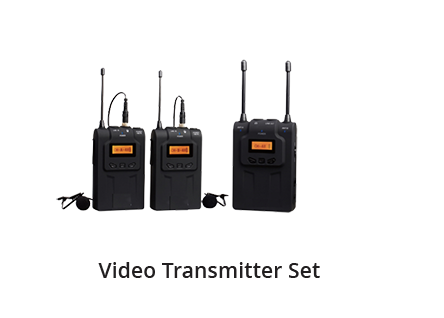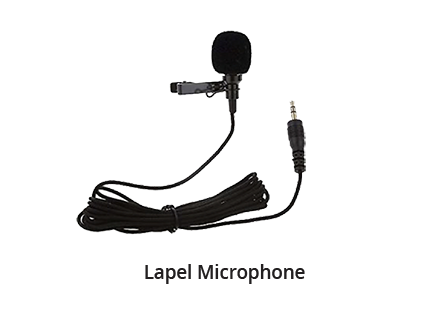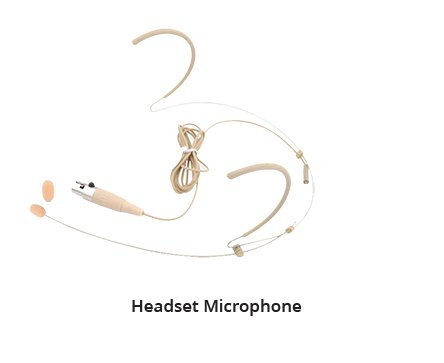
By Rev. Paul Wooley
Imagine if you will the possibility of miniaturizing a radio station that is so small that you can put it in your pocket. That is the reality of a wireless microphone system when a pocket or ‘belt-pack’ transmitter is matched with a receiver which is then connected to a sound system.
In this instalment, I will give some basic definitions mixed with ideas that can save money and improve performance.
Wireless systems allow freedom from microphone cords, which are, however, the most dependable system. However, wireless units, like any technical system, have a number of ‘trade-offs’ to be considered.
There are a myriad of different transmission technologies, analogue Frequency Modulation (FM) on either VHF or UHF frequency bands, and the newer Digital systems.
 Wireless transmitters come in two basic formats, Belt Packs for use with either Lapel Microphones or Headset Microphones, or Hand Held microphones. What is seen the most in churches are Belt Pack systems which allow the speaker to operate in a hands-free manner.
Wireless transmitters come in two basic formats, Belt Packs for use with either Lapel Microphones or Headset Microphones, or Hand Held microphones. What is seen the most in churches are Belt Pack systems which allow the speaker to operate in a hands-free manner.
Receivers for these systems are either enclosures, that are about the size of a pocketbook, some of which are designed to be mounted in equipment racks with other sound gear.
 However, the rise in the number of people recording video with DSLR cameras has led to the marketing of systems which have a small receiver that can mount on the flash shoe of a camera. The output of these receivers can plug directly into your sound system using an inexpensive 3.5mm to 1/4 inch plug converter. These systems, which are available as either FM Analogue or Digital, generally offer decent performance and a transmission distance of about 30 meters. The difference is that regular format systems range from a low of around $200 to thousands of dollars, while the camera mount systems are available from below $100 to about $300. Additionally, many of the camera mount systems are available with a two-transmitter, one-receiver package.
However, the rise in the number of people recording video with DSLR cameras has led to the marketing of systems which have a small receiver that can mount on the flash shoe of a camera. The output of these receivers can plug directly into your sound system using an inexpensive 3.5mm to 1/4 inch plug converter. These systems, which are available as either FM Analogue or Digital, generally offer decent performance and a transmission distance of about 30 meters. The difference is that regular format systems range from a low of around $200 to thousands of dollars, while the camera mount systems are available from below $100 to about $300. Additionally, many of the camera mount systems are available with a two-transmitter, one-receiver package.
 There are two types of microphones used with the belt-pack transmitters.
There are two types of microphones used with the belt-pack transmitters.
The most common is the lapel microphone (sometimes called a lavalier microphone), the other, increasingly popular type is the headset/earset/miniboom which puts a tiny microphone closest to the mouth of the speaker. They capture a clearer signal, and since they are closer to the mouth of the speaker they pick up less room sound. The actual microphone elements in both configurations are electret elements. (See previous article on microphones)
 Headset microphones are available at a moderate cost, with connections to fit any brand of transmitter/connector format. You can buy a decent headset for less than $30 or you can pay hundreds of dollars, however, the actual microphone elements are all made in the Orient, so there is very little difference in performance.
Headset microphones are available at a moderate cost, with connections to fit any brand of transmitter/connector format. You can buy a decent headset for less than $30 or you can pay hundreds of dollars, however, the actual microphone elements are all made in the Orient, so there is very little difference in performance.
My experience in a number of churches has been that replacement of a lapel-style microphone with a headset has made an immediate and very noticeable improvement in sound quality.
If you have any questions you wish answered in this column, you can email the author: paul@woolley.com
Rev. Paul Woolley is a retired priest in Huron. He has 55 years of experience working with audio equipment of every description for varied venues.
RELATED:
Improving Church Sound Systems
Pointers for Speakers and Readers